
Hi, and welcome to this review of how light interacts with matter! In this video, we’ll talk about what light is and how it interacts with physical substances through either reflection, transmission, or absorption.
Before we discuss the interaction of light and matter, let’s quickly review the properties of light.
Properties of Light
Light can be thought of as either a particle called a photon or as a wave. When we talk about reflection, transmission, and absorption, the wave-like properties of light are important.
The wave properties of light include its frequency, wavelength, and amplitude.
Frequency, Wavelength, and Amplitude
The frequency can be thought of as the number of oscillations per second or the number of crests or troughs that pass a certain point per second.
The wavelength is the distance from trough to trough or crest to crest of the wave, where the trough is the lowest part of the wave and the crest is the highest.
The amplitude describes the height of the wave, which is related to the energy of the wave. The speed of any wave is the product of frequency and the wavelength and, as such, frequency and wavelength have an inverse relationship for any given speed.
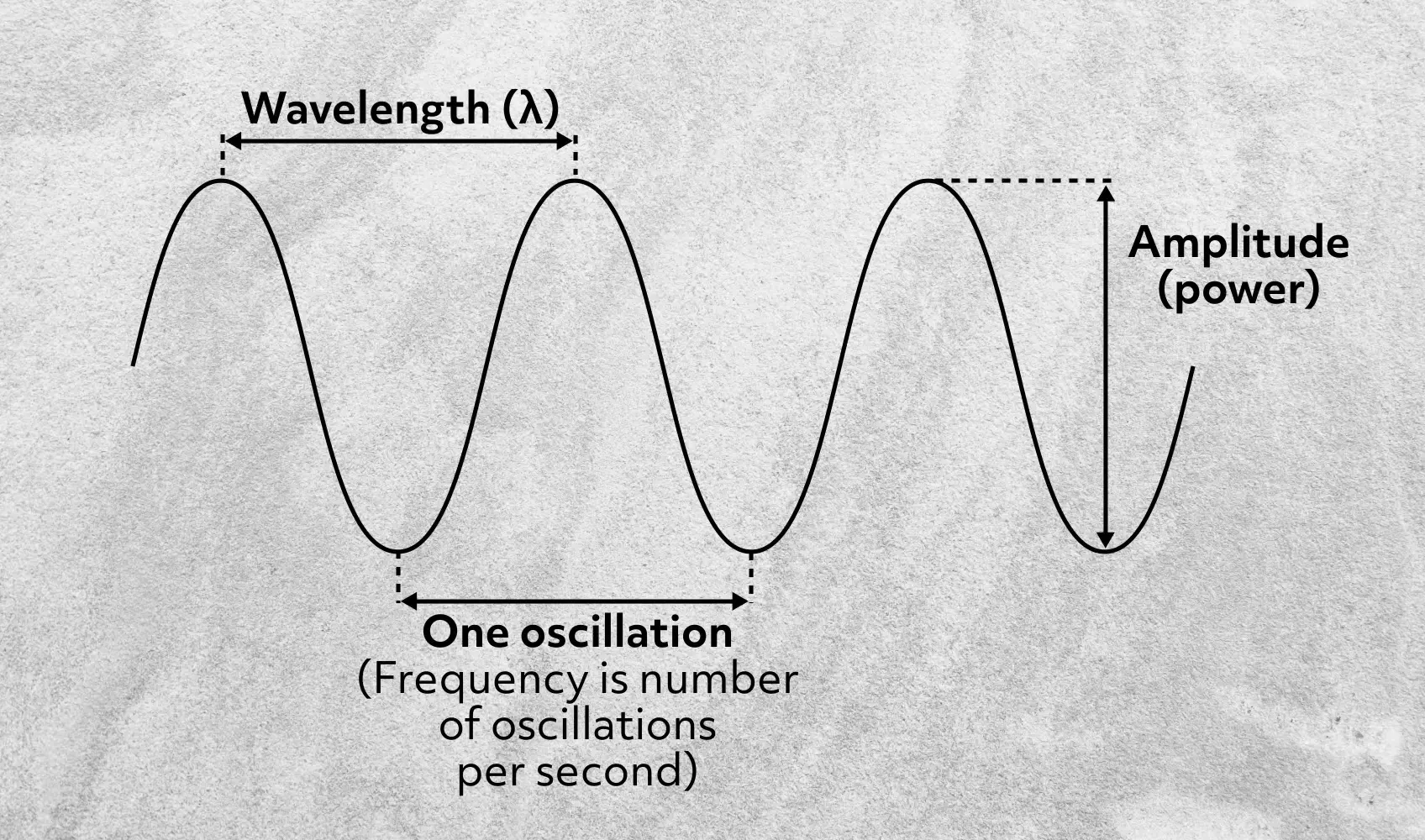
The Speed of Light
One of the most important properties of light is that its speed in a vacuum is one of the universal constants. In other words, every frequency of light corresponds to a particular wavelength. This is why depictions of the electromagnetic spectrum show frequencies paired with wavelengths.
The whole electromagnetic spectrum contains far more than just the visible light range; the light we see is only a small portion of this spectrum.
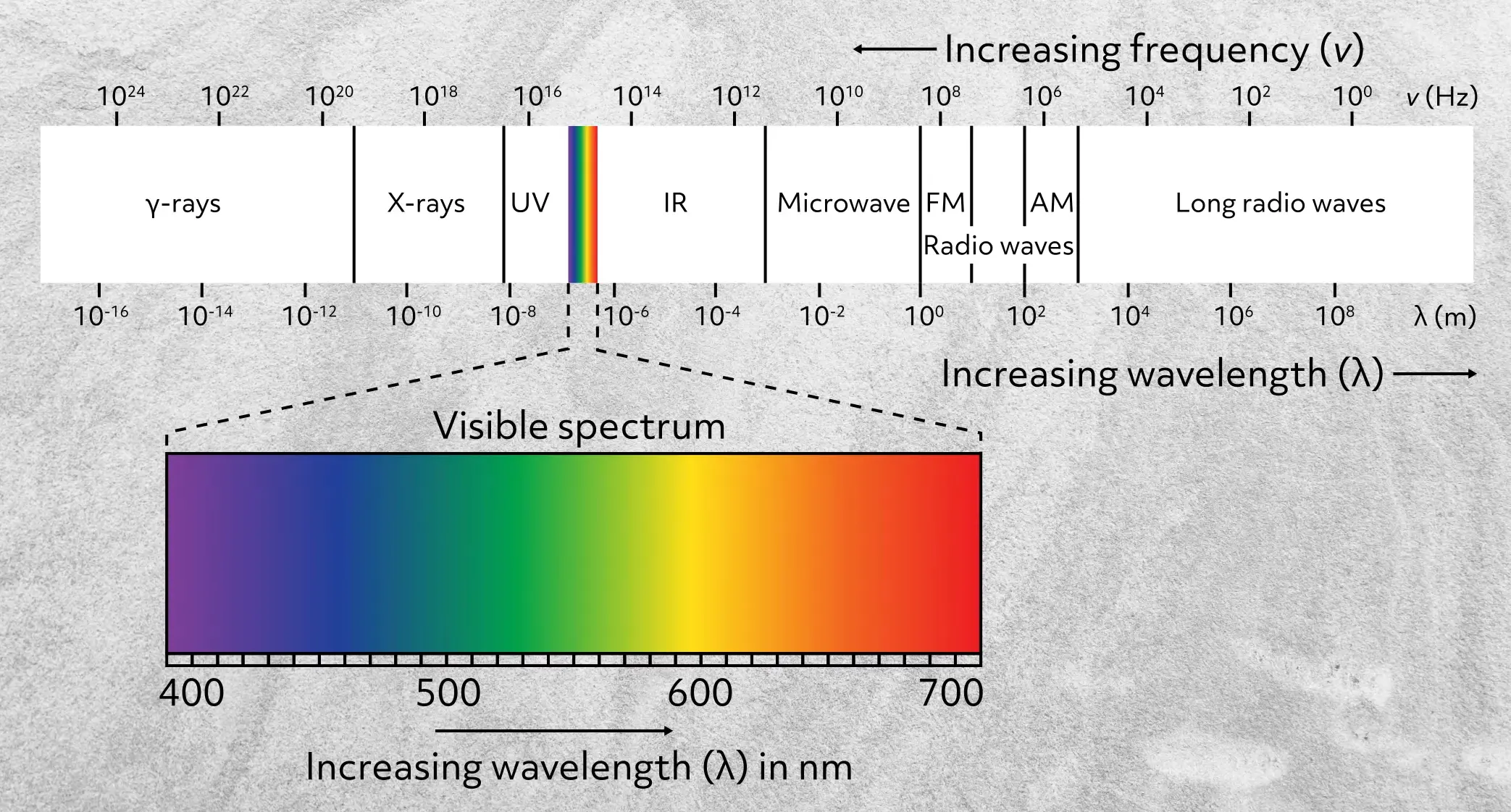
Generally, a given frequency of light interacts with matter in one of three ways: reflection, transmission, or absorption. Keep in mind that frequencies of light may interact differently with the same matter, so it is often simplest to consider one frequency, or a small range of frequencies, at a time.
Reflection
Let’s dive into the interactions between light and matter, starting with reflection. You are probably already familiar with this concept. Reflection occurs when a ray of light of a particular frequency hits a surface and bounces back off.
You may have heard the phrase, “the angle of incidence is equal to the angle of reflection.” What this means is that the angle of the incident ray, measured from a line perpendicular to the surface, will always be the same angle as the reflected ray, measured from that perpendicular line. This is the same way a ball bounces off the rail in billiards. The ball will bounce off the rail at the same angle that it approached the rail.
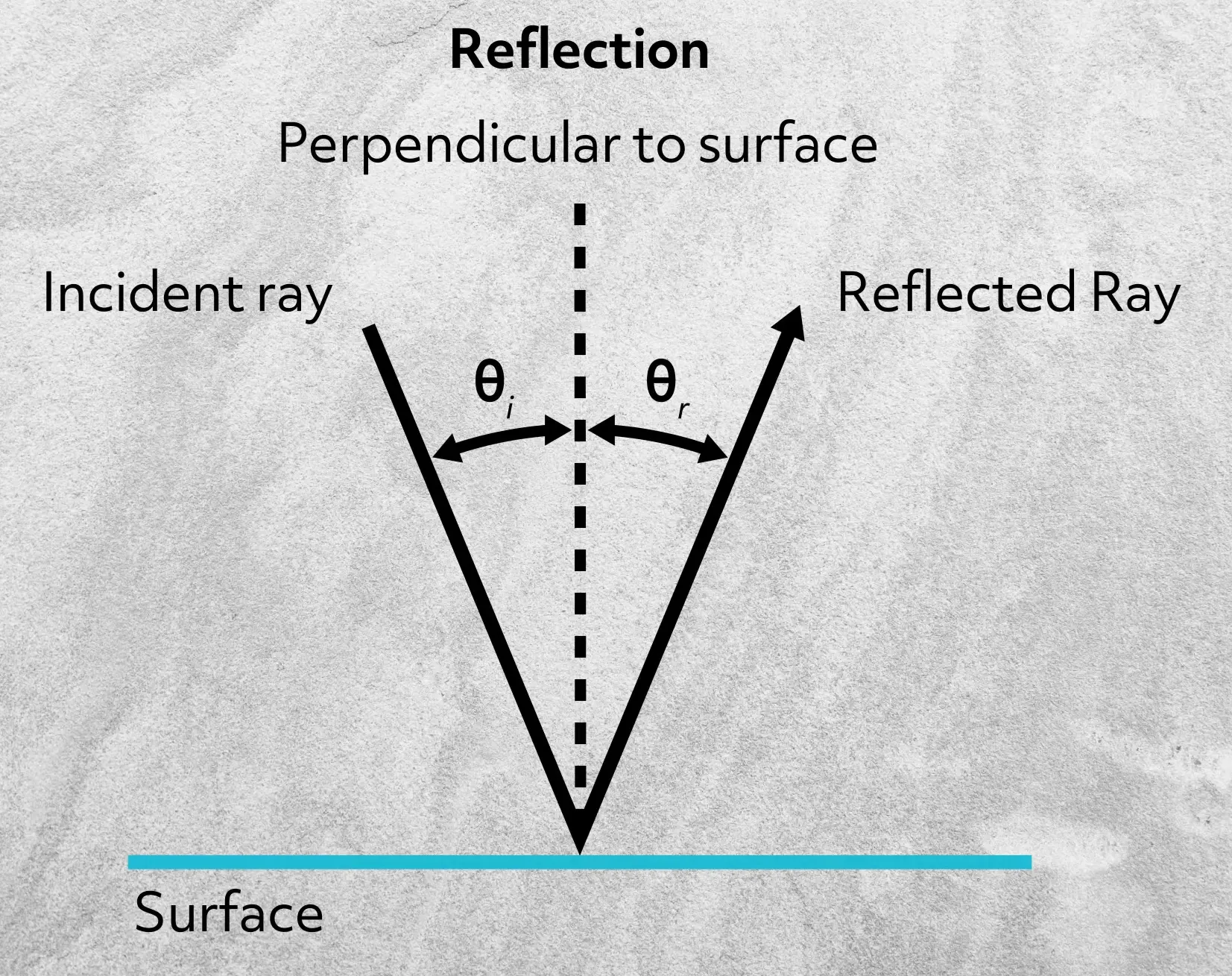
Transmission
Again, this concept may be somewhat familiar to you, but the concept of transmission may be a little less intuitive. Transmission occurs when light passes through a surface. With visible frequencies, you can see this happen with materials like glass or clear plastic. We are able to see through these materials thanks to the transmitted light.
However, the light may be refracted, so that it comes out at a slightly different angle from how it entered. This all depends on the properties of the specific material that the light is traveling through and the frequency or wavelength of the light. When the light is refracted within the material, there may be a warped appearance while looking through it.
Absorption
The last type of interaction we’ll be looking at is absorption. Much like a sponge can absorb water, many materials can absorb certain frequencies of light. When a material absorbs light, the energy from that light is transformed into heat.
So, think about when you leave something outside on a sunny day—when you touch it, it feels warm or even downright hot. This happens because the object is absorbing the light from the sun!
Materials will absorb only certain frequencies of light, and transmit or reflect others. It all depends on the atoms in that material and the way they interact with that frequency of light.
How Light Affects Color
It may not be surprising that the reflection, transmission, and absorption of optical light affects how we see colors, as well. Each “color” of light that we see has a different frequency and wavelength of light, with violet having the shortest wavelength (highest frequency) and red having the longest wavelength (lowest frequency).
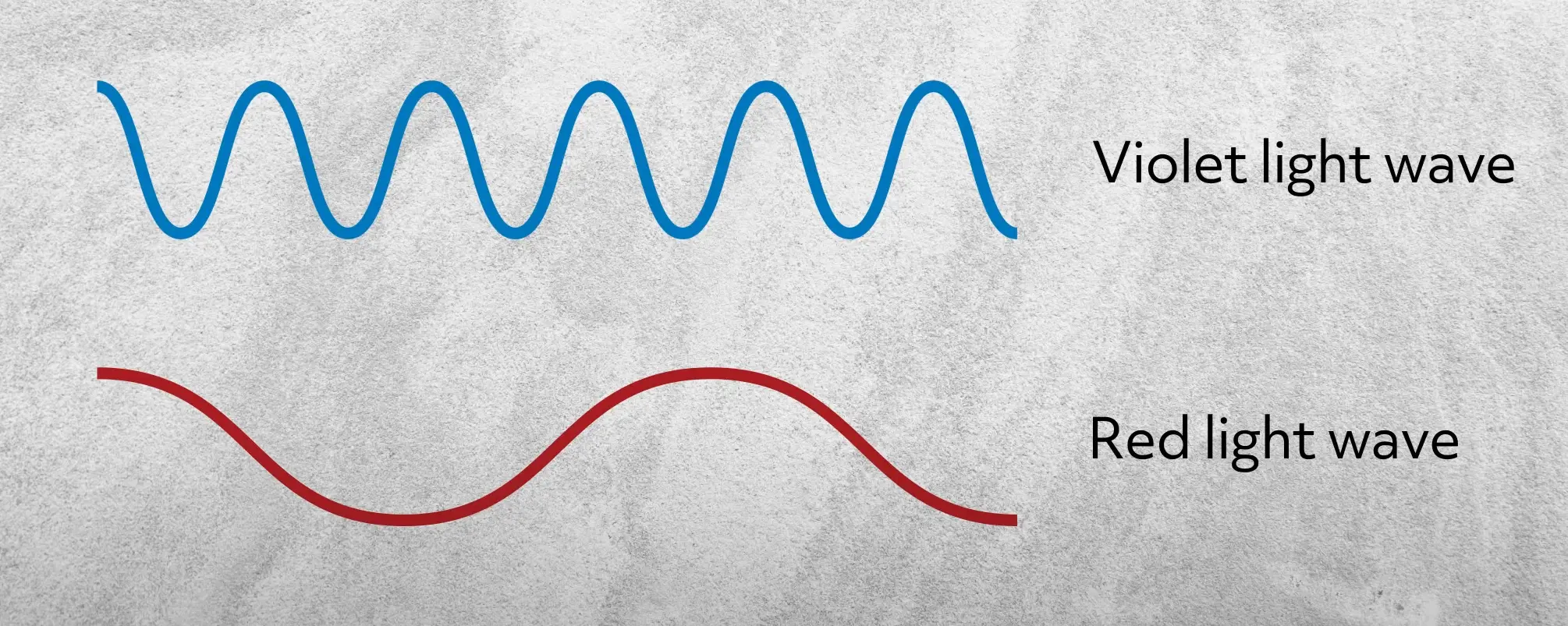
The rest of the colors’ frequencies and wavelengths are all somewhere between these.
These differences affect whether each color of light is absorbed in a given material. For example, when you look at a leaf, you see it as green.
This is because most of the other colors of light are absorbed into the surface of the leaf and green light is being reflected off!
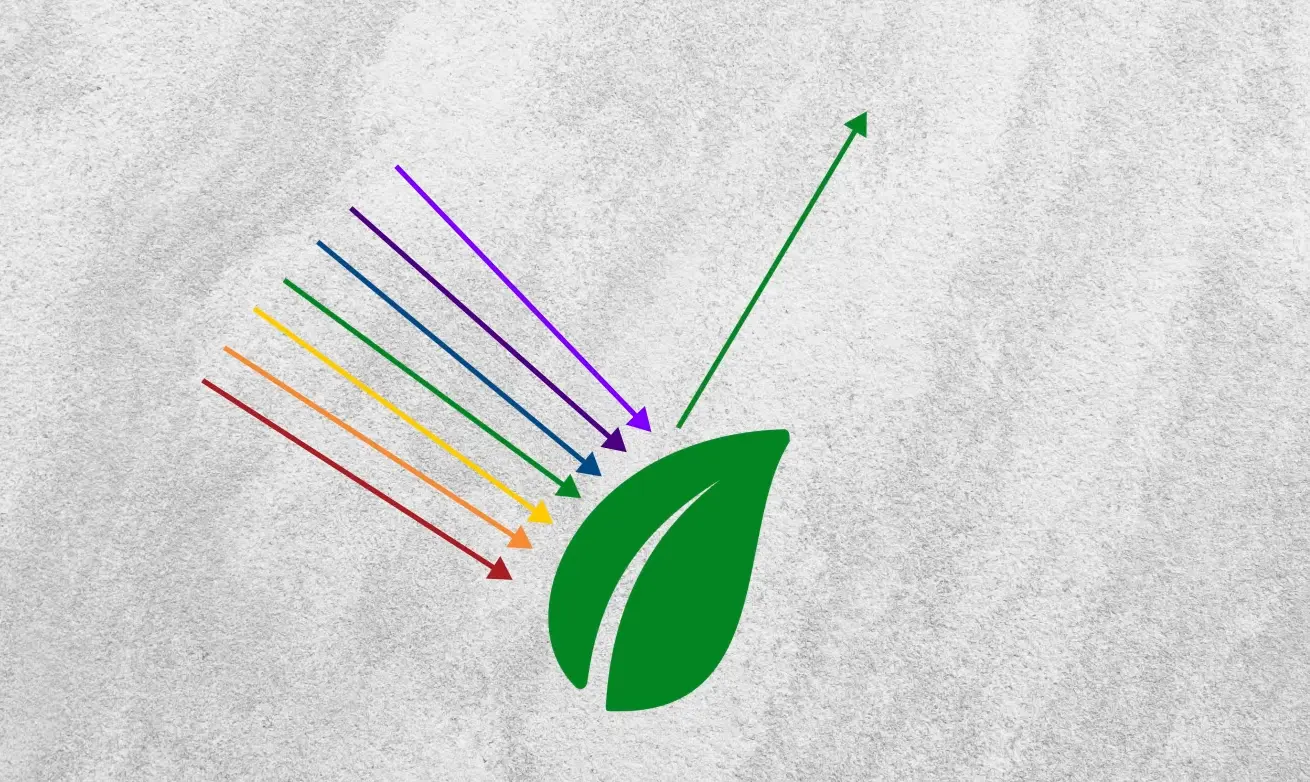
Review Questions
Okay, now that we’ve discussed reflection, transmission, and absorption, let’s check your understanding with a couple of questions!
1. White light consists of all the colors of the rainbow. A beam of white light hits a surface that absorbs all colors except red. The beam hits the surface at an angle of 40° from a line perpendicular to the surface. What color will this surface appear to be? At what angle from the perpendicular will this particular beam be reflected?
- Rainbow colored, 40°
- Red, 50°
- Red, 40°
- All colors except red, 50°
Red is the only color that is reflected from the surface, making it the only visible color. For reflected light the angle of the reflected light is always equal to the angle of the incident light.
2. If you put a flashlight up to an empty plastic milk jug, what do you think will happen to the light?
- It will all be transmitted.
- It will be partially reflected and partially absorbed, but not transmitted.
- It will all be absorbed.
- There will be a combination of reflection, transmission, and absorption.
Let’s see what this actually looks like. It will be obvious that some light is transmitted through the partially opaque plastic (you can see it on the other side) and you can also see some light shining (reflecting) off of the spot you are shining the light. Absorption may not be as obvious, but if you leave a milk jug under a bright light for too long, you’ll notice that it will start to heat up.
That’s all for this video on reflection, transmission, and absorption. Thanks for watching, and happy studying!